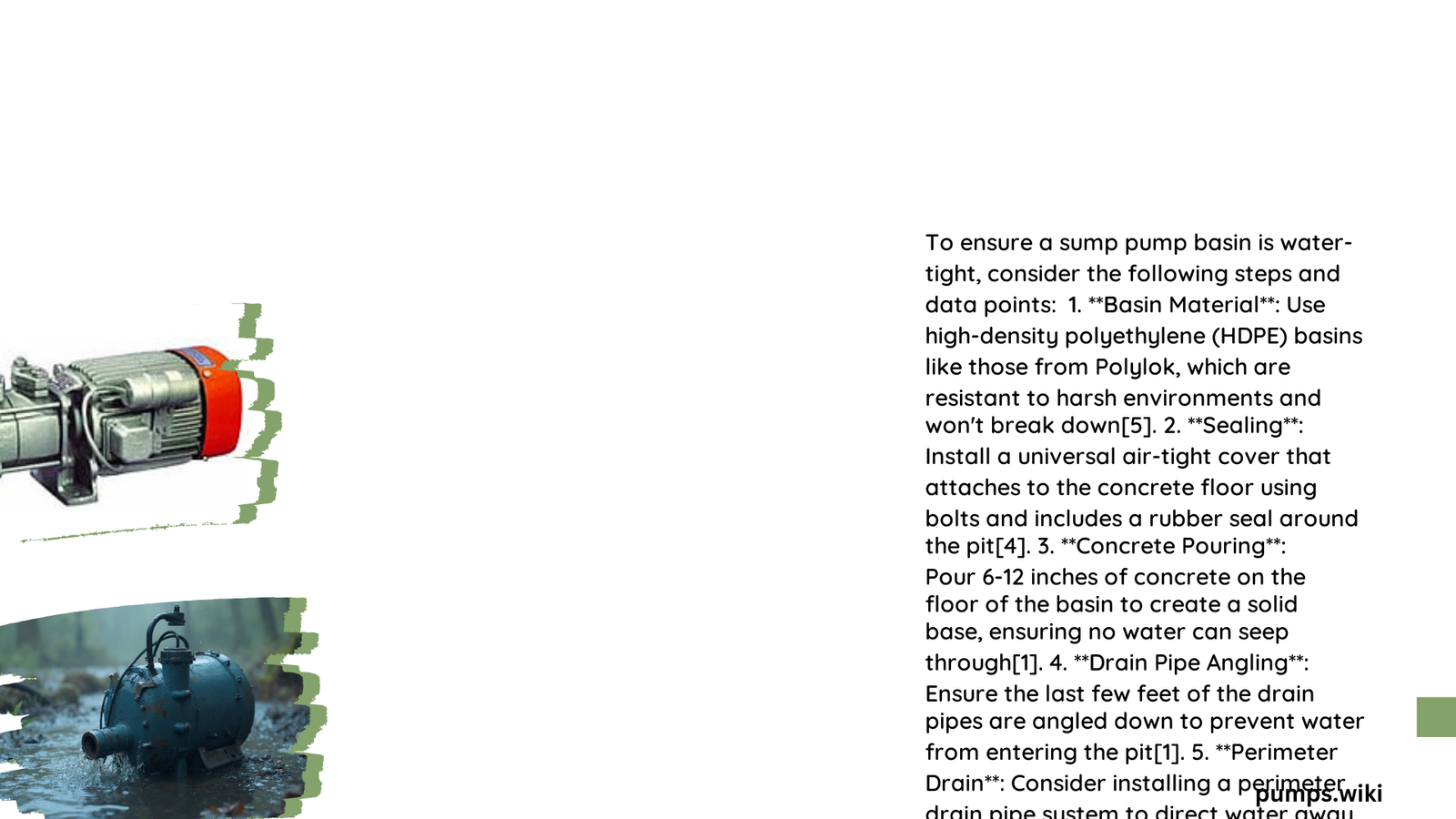Basement water intrusion can devastate home foundations and property, making a water-tight sump pump basin critical for homeowners. A properly sealed sump pump basin prevents moisture infiltration, reduces potential structural damage, and ensures reliable water management. Homeowners must understand precise installation techniques, material selection, and sealing methods to create an impenetrable water management system that protects their property from potential flooding risks.
What Makes a Sump Pump Basin Truly Water Tight?
Why Do Dimensions Matter for Water Tight Installation?
Proper sump pump basin dimensions are crucial for effective water management. Consider these key specifications:
| Basin Dimension | Recommended Size | Purpose |
|---|---|---|
| Depth | 30-36 inches | Prevents pump short cycling |
| Width | 18-24 inches | Accommodates standard pump sizes |
| Base | 5-6 inches of 1/2″ rock | Ensures proper drainage |
Critical Material Selection
When selecting materials for a water-tight sump pump basin, prioritize:
– High-density polyethylene (HDPE) basins
– Corrosion-resistant structural foam
– Non-porous materials that resist water absorption
How Can You Seal Basin Connections Effectively?
Sealing techniques determine the basin’s water-tightness:
- Cement Sealing Process
- Pour 2-3 inches of rock around basin exterior
- Apply waterproof cement flush with concrete floor
-
Trowel surface smooth to prevent water penetration
-
Discharge Pipe Protection
- Bore exterior wall hole carefully
- Extend pipe 6 inches from home
- Position discharge point 24 inches above ground
- Apply waterproof sealant around pipe entry point
What Are Common Water Infiltration Risks?
Potential water infiltration risks include:
– Improper basin sizing
– Inadequate sealing techniques
– Poor drainage infrastructure
– Compromised concrete floor connections
How Much Does a Water Tight Sump Pump Basin Cost?
Estimated installation costs:
| Component | Price Range |
|---|---|
| Basin | $50 – $200 |
| Sump Pump | $100 – $500 |
| Rock/Cement | $30 – $70 |
| Professional Installation | $200 – $500 |
What Maintenance Ensures Long-Term Water Tightness?
Recommended maintenance practices:
– Annual basin inspection
– Check cement seals for cracks
– Verify discharge pipe alignment
– Test pump functionality quarterly
– Replace worn sealing materials promptly
Pro Tips for Maximum Water Tight Performance

- Use marine-grade sealants
- Install backup battery systems
- Consider professional waterproofing assessment
- Monitor basement humidity levels
- Implement exterior drainage improvements
Potential Consequences of Poor Basin Sealing
Risks of inadequate water-tight installation:
– Structural foundation damage
– Mold and mildew growth
– Electrical system corrosion
– Decreased property value
– Potential health hazards
Conclusion
Creating a water-tight sump pump basin requires meticulous planning, quality materials, and precise installation techniques. Homeowners who invest time in proper implementation can significantly reduce water damage risks and protect their property’s structural integrity.
